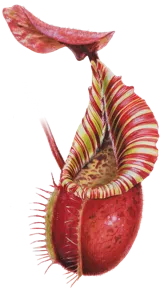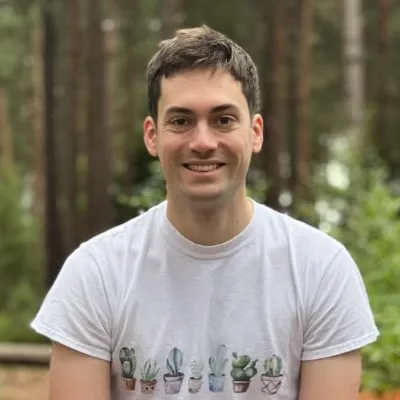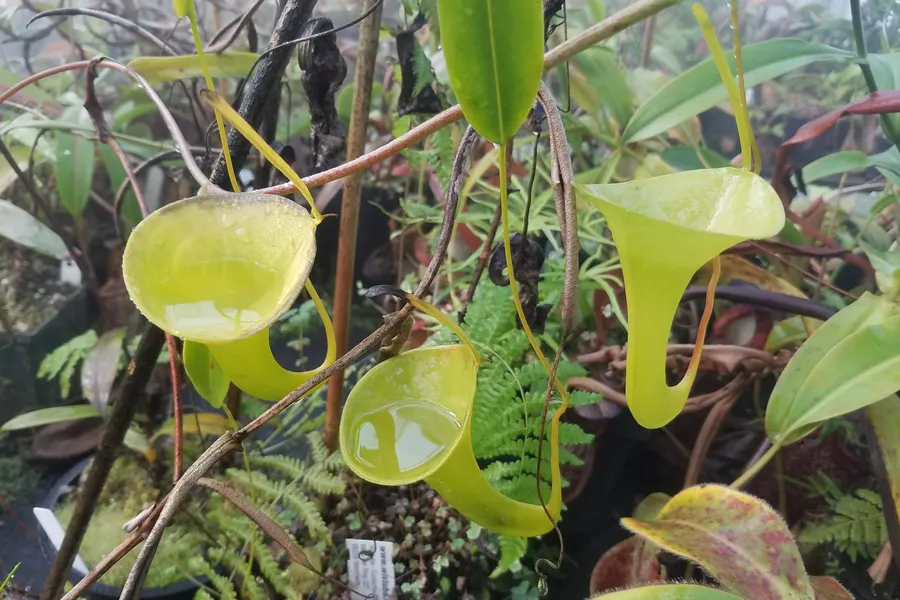Carnivero is a new carnivorous plant nursery based in Austin, Texas.
Owned and operated by Drew Martinez, the nursery opened its doors just a few of months ago. I spoke to Drew about the origins of the nursery, the process of moving 2000 sq ft. of plants halfway across the USA, and the trajectory of Carnivero’s exciting new breeding program. Photos of Carnivero’s impressive collection are presented throughout.
Attendees of this year’s ICPS conference will probably remember Drew’s talk on the role of cultivation in conservation, but he’s also an active member of the IUCN Carnivorous Plant Specialist Group (CPSG). Drew was kind enough to share his thoughts on the future of the CP hobby and the role of breeding programs in reducing the devastating impact of poaching on wild populations.
It’s been a quiet few months here on the blog, which is due in part to my greenhouse project finally coming to fruition. I’m aiming to write another post before the holidays, and you can expect a whole lot more in the new year.
Enjoy, and thanks for reading! Be sure to subscribe to Tom’s Carnivores for more features like this.
Jump to a particular section
1. The Origins of Carnivero
How did you first become interested in carnivorous plants?
My first encounter with carnivorous plants came 22 years ago, when my brother and I visited California Carnivores. We were instantly enthralled and consumed all the literature we could find on carnivorous plants that was available at the time.
Coming from a family of builders, the natural inclination was to build a greenhouse to house my carnivores. My grandfather was a carpenter (the first Mexican-American one licensed in Arizona), my father an electrical engineer and my uncles were electricians, engineers, tradesman, and maintenance personnel for the military. So of course the construction was a family affair. Throughout high school, I had a 12’ x 10’ backyard retreat where I grew my plants.
At first, my brother and I killed a lot of plants. Inevitably, the Arizona heat was always a formidable opponent. But it led me to become curious about designing habitats for biology. I began to study thermal physics by reading some of my dad’s old textbooks and came up with some greenhouse modifications that allowed us to grow a surprisingly large number of species. We traded with growers from around the world and built up a sizeable collection. Unfortunately, shortly before I left for college, there was a power outage on a 110°F day (43°C) and everything in the greenhouse was lost… the smell of cooked plants is still seared into my memory to this day.
I went to study physics and biology at Stanford University, where I was introduced to many experimental microbiology techniques. After graduation, I got my first job at Pacific Biosciences and also started work on my M.S. in optical sciences, remotely at the University of Arizona. It was around 2012 and LEDs were just starting to hit the consumer market, so for my thesis, I focused on evaluating their efficacy vs. industry standards for horticultural applications. I presented my findings at the 2014 ICPS conference in Cairns.
Was it around this time that you began travelling to see carnivorous plants in the wild?
Yes - with a steady source of income, I was able to take some amazing trips. The most eye opening was my first trip to Borneo in 2009, where I saw about 20 species of Nepenthes with the famous Chi’en Lee. Aside from the amazing natural experience and Chi’en’s contagious enthusiasm, I was really excited to learn nature photography with one of the greats (and it did not disappoint).
Click on any photo to zoom in. Use arrow keys or swipe to navigate.
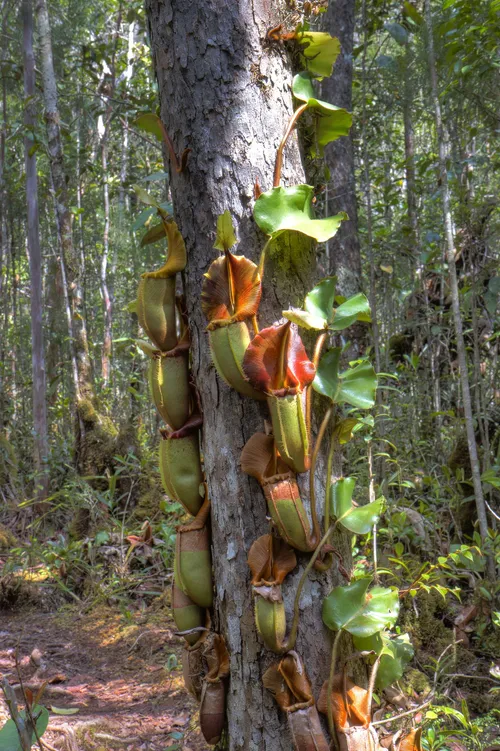 01. Drew: One of my favourite sites, Nepenthes veitchii from the Maliau Basin. Some of N. veitchii here were climbing 30 feet tall around these trees!
01. Drew: One of my favourite sites, Nepenthes veitchii from the Maliau Basin. Some of N. veitchii here were climbing 30 feet tall around these trees! 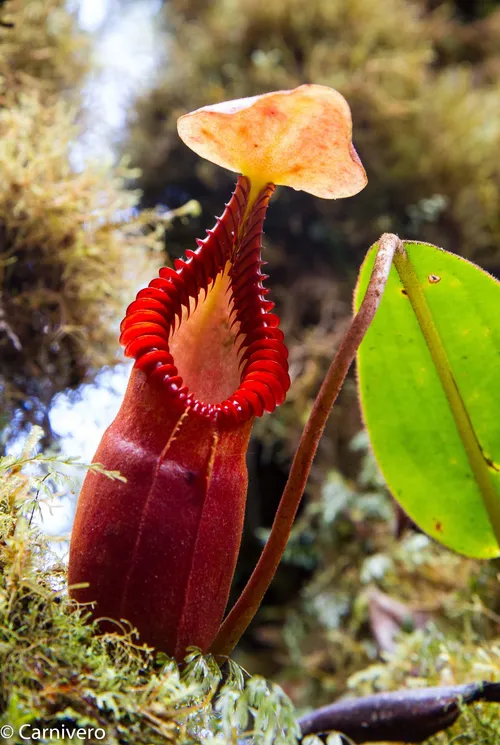 02. Nepenthes macrophylla from Trusmadi, photographed by Drew
02. Nepenthes macrophylla from Trusmadi, photographed by Drew 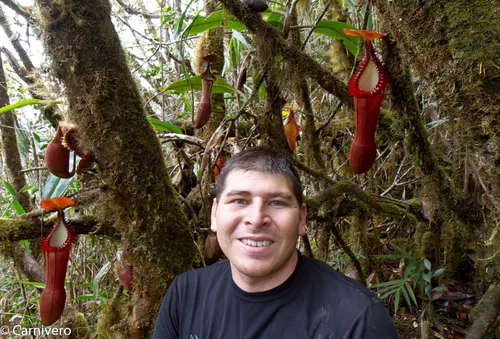 03. Drew on Tambuyukon with Nepenthes edwardsiana
03. Drew on Tambuyukon with Nepenthes edwardsiana So many of their habitats are threatened by human development. Even in the habitats that are extremely remote, it’s clear that poaching is rampant and posing a threat of extinction to some populations. These thoughts stayed with me as I started to build my collection. I tried to get plants from sustainable sources but realized how few sources for carnivores there were. Although social media can bring growers closer together, it also gives poachers more ready access to customers.
I wanted to gain insight for where the carnivorous plant industry was headed, and the orchid world - as a more established industry - was the obvious place to draw parallels. Of course there are still problematic areas, but there are also some bright spots. Thanks to impressive breeding work over the last couple of decades, orchids have been bred to travel into grocery stores and then withstand average household environments without deteriorating.
Do you see carnivorous plants following a mass-market trajectory similar to orchids?
I see carnivorous plants being bred to be more amenable to household conditions. And at the same time, these plants can be bred for color and shape. Borneo Exotics really pioneered some amazing new plants in their Biodomes program. Unfortunately, the biodome hardware seems to not have worked out for them as well as projected but the plants they selected from their breeding program are rock solid and well suited for many households. I’m hoping that they will be offered in more garden centers and even supermarkets so that the hobby can inspire and educate more people.
Orchid breeding has also dramatically reduced the demand for poached plants. Some rare species that had once commanded >$25,000 for a single poached plant are now 8 generations deep into line breeding programs that produce progeny with flowers of such high quality that it makes the demand for the poached plants non-existent. As early as 2010, Nepenthes hybrids were really capturing a lot of attention, especially crosses that could only have been dreamed of the previous decade. There were also a few Sarracenia growers who were really starting to focus on breeding the best genetics possible for both species line breeding and hybrids.
Was this part of what inspired Carnivero?
Yes - in 2010, I decided to undertake a daunting quest: to open a carnivorous plant nursery that specializes in breeding and promoting the very best genetics available. In doing so, I hope that wild populations will be under less pressure from poaching threats because line-bred material will simply be superior. Furthermore, I hope to breed plants for a wider clientele than dedicated hobbyists with greenhouses or grow racks. Will we end up where Phalaenopsis orchids are currently? I’m not sure. But giving it a shot will be exciting and interesting.
Click on any photo to zoom in. Use arrow keys or swipe to navigate.
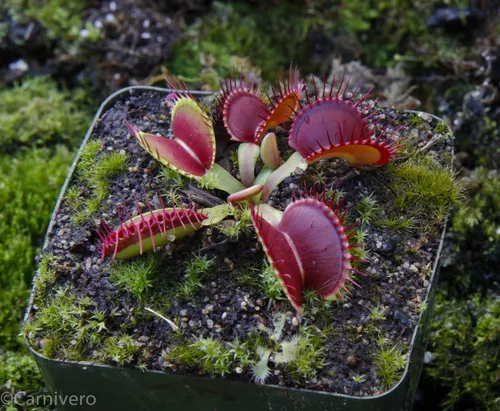 1. The Venus flytrap, Dionaea muscipula "B52"
1. The Venus flytrap, Dionaea muscipula "B52" .DJw5hNzs_udQeo.webp) 10. Sarracenia flava var ornata ("Black Veins" x "PG Gulf Coast")
10. Sarracenia flava var ornata ("Black Veins" x "PG Gulf Coast") 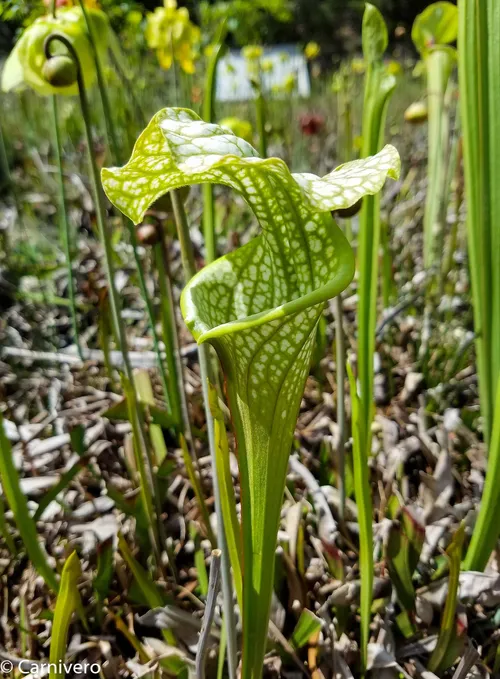 11. Sarracenia oreophila x leucophylla
11. Sarracenia oreophila x leucophylla .DE6otVe8_3RaIE.webp) 12. Sarracenia purpurea var venosa (Tatnall Co, GA)
12. Sarracenia purpurea var venosa (Tatnall Co, GA) 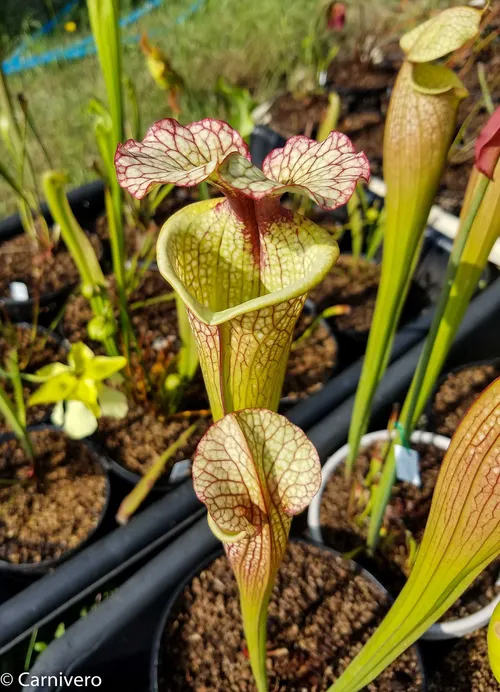 13. Sarracenia "Leah Wilkerson"
13. Sarracenia "Leah Wilkerson" 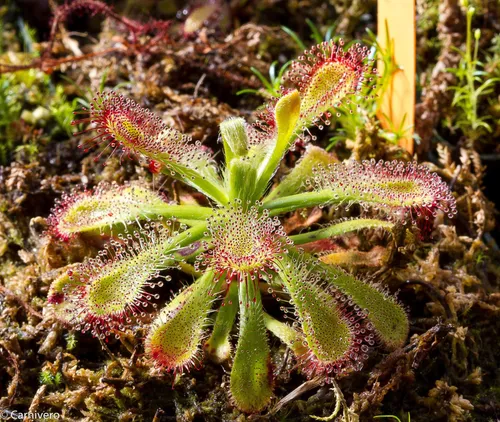 14. Drosera glabripes hybrid
14. Drosera glabripes hybrid 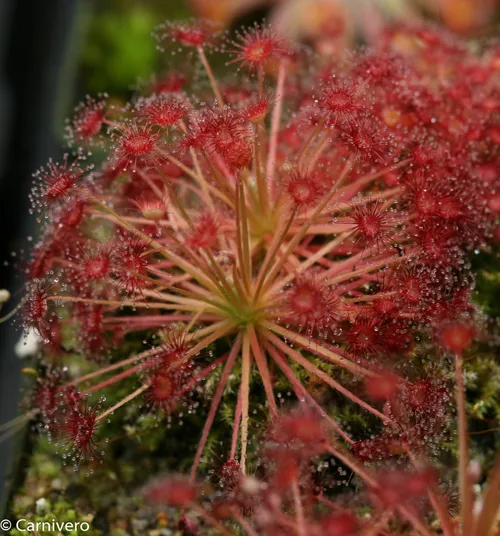 15. Drosera paradoxa
15. Drosera paradoxa 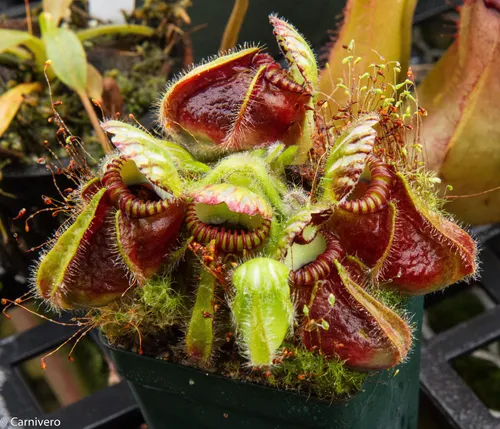 2. Cephalotus follicularis, a Borneo Exotics clone
2. Cephalotus follicularis, a Borneo Exotics clone 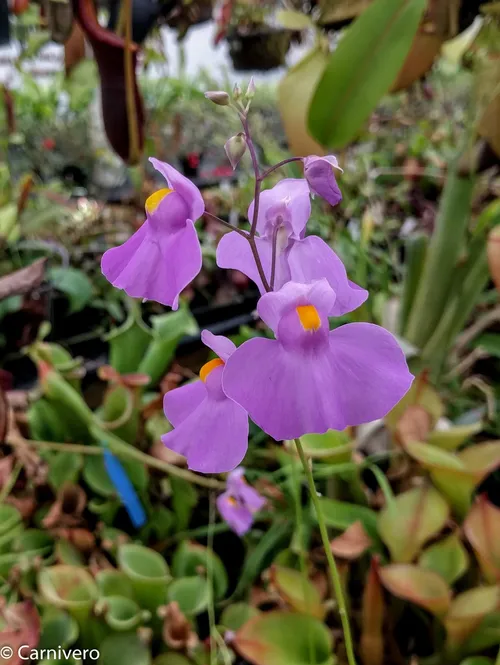 3. Utricularia longifolia
3. Utricularia longifolia 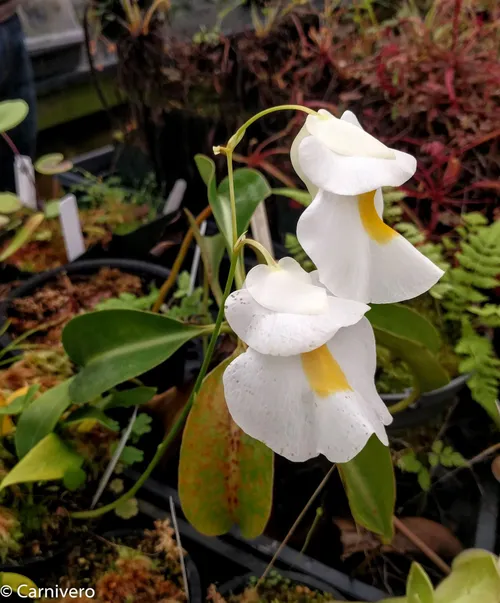 4. Utricularia alpina
4. Utricularia alpina %20x%20S.%20flava%20var%20ornata%20(Gulf%20Coast).I65VaMex_Z1BBBhB.webp) 5. Sarracenia leucophyla (AJ01) x S. flava var ornata (Gulf Coast)
5. Sarracenia leucophyla (AJ01) x S. flava var ornata (Gulf Coast) 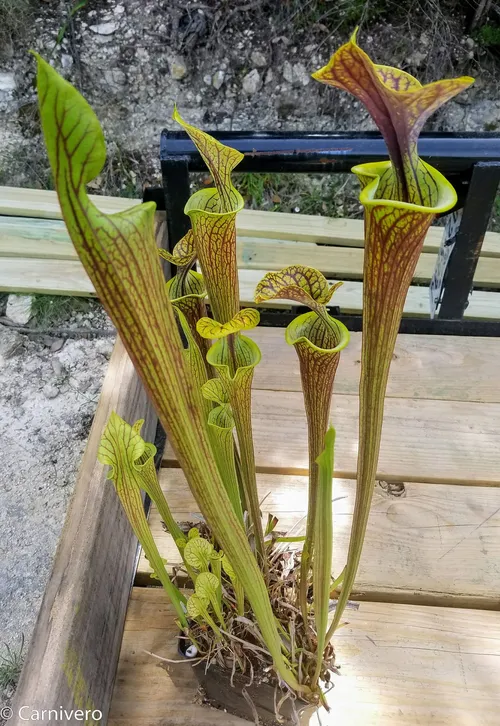 6. Sarracenia oreophila x flava
6. Sarracenia oreophila x flava 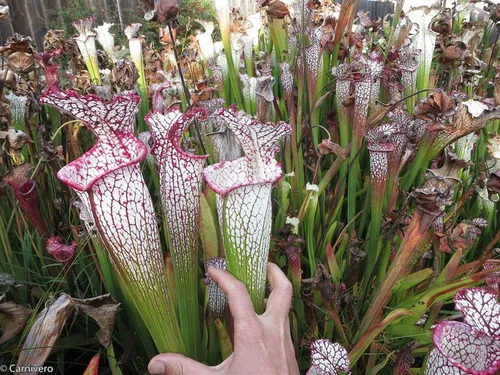 7. Sarracenia leucophylla "Drummonds Giant"
7. Sarracenia leucophylla "Drummonds Giant" 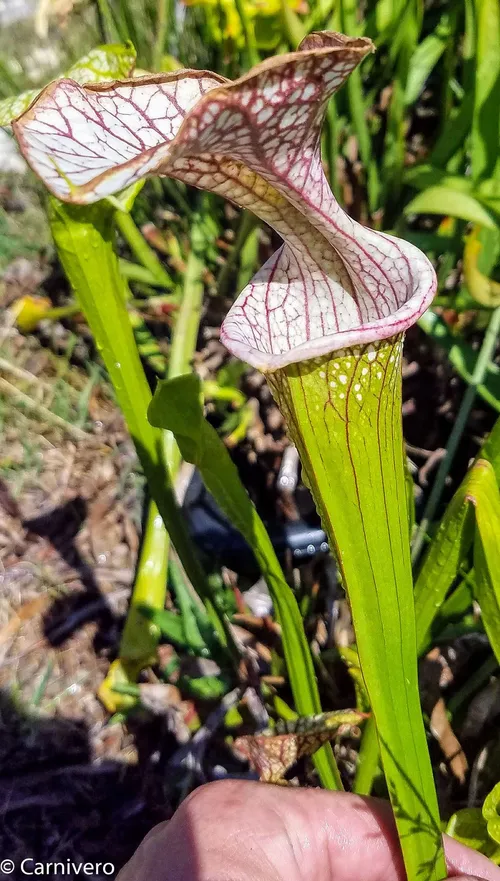 8. Sarracenia "Adrian Slack" x "Daniel Rudd"
8. Sarracenia "Adrian Slack" x "Daniel Rudd" 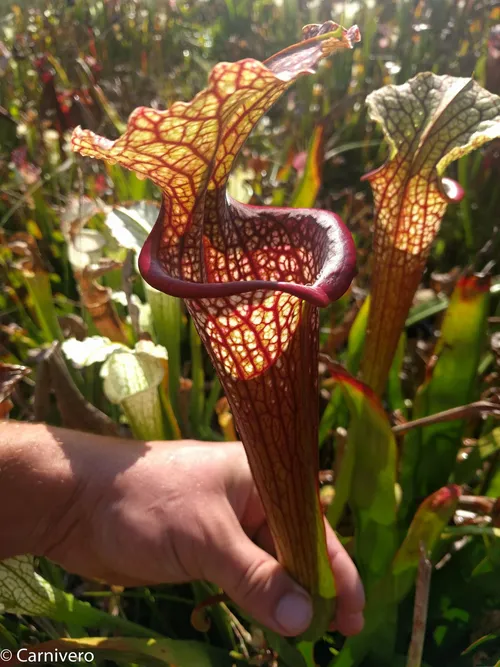 9. Sarracenia "Saurus"
9. Sarracenia "Saurus" 2. Setting Up Shop
Where did you work in the years leading up to Carnivero’s opening?
So in 2012 I was working for Google X, the far-reaching research arm of Google. My position on the advanced optics development team for Google Glass required travel all over the world. Google had a very open travel policy which allotted a certain budget for a trip, and as long as you showed up to the do the work, they were fairly agnostic to your travel accommodations. I typically scheduled my trips to begin and/or end on weekends so that I could spend an extra few days visiting nearby carnivorous plant habitats or growers in the region.
I really cherished making friends around the world with a shared passion. I was also able to visit a large number of the world’s premier nurseries and learned a great deal about their growing environments. The travels also led to being able to import some amazing genetics from far off places.
As my collection grew, I moved into more large-scale greenhouse setups. Luckily, the mild climate of the San Francisco Bay Area did not require much specialized equipment so I was able to get by fairly easily with a highland and lowland greenhouse and a large outdoor setup for temperates. I relied on automation as much as possible but ultimately I needed to hire help to keep the nursery stock going while I was away. A special thanks to my nursery manager, Jesse Huro, who was instrumental in keeping things growing. I just wish he would have been able to come out to Texas with me.
By 2015 the cost of living in the Bay Area was skyrocketing, and my wife Selina and I were considering the idea of relocating to be closer to her family. Although Selina doesn’t have as deep of a passion for carnivores as I do, she’s been incredibly supportive through this whole process of building up the nursery. So in the summer of 2015, we bought a house in Austin and prepared for the move. But how do you grow exacting plants in an environment as hot/cold as Texas? And what does moving >2000 square feet of carnivorous plants across the USA entail? These were daunting questions!
Click on any photo to zoom in. Use arrow keys or swipe to navigate.
 01. The intermediate room
01. The intermediate room  02. The highland room
02. The highland room 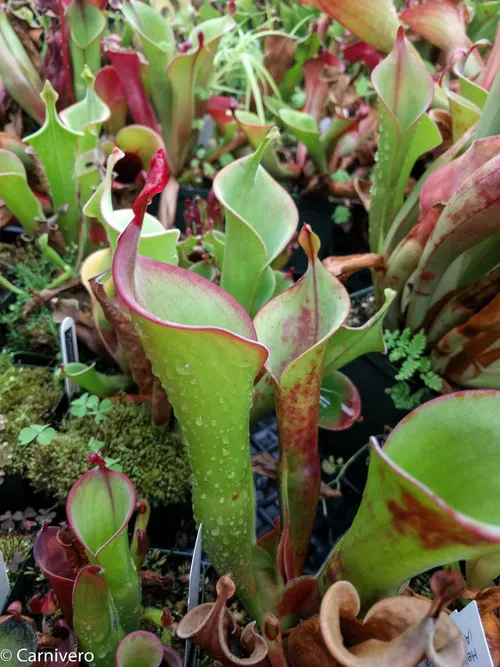 03. An assortment of Heliamphora sun pitchers
03. An assortment of Heliamphora sun pitchers 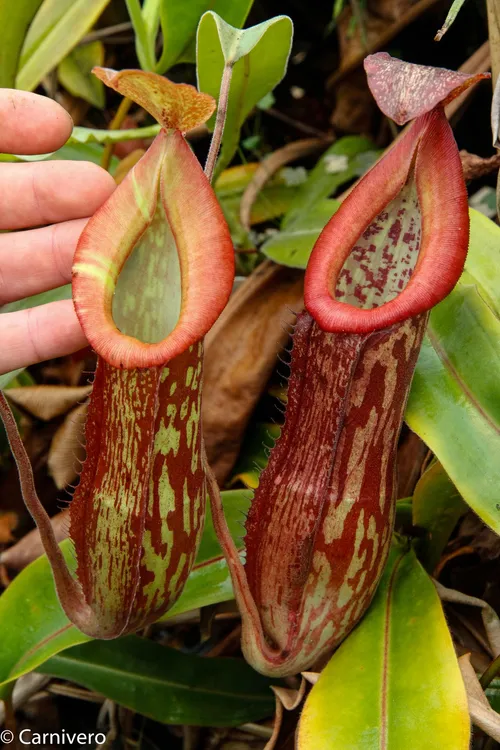 04. Nepenthes "Splendid Diana"
04. Nepenthes "Splendid Diana" 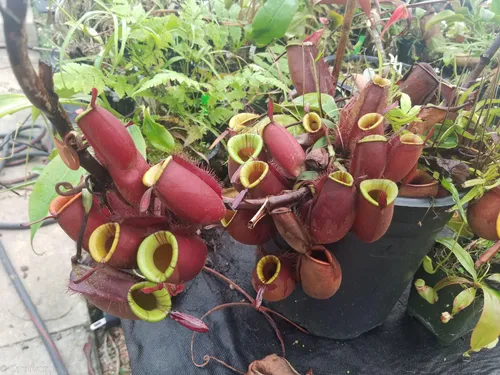 05. Nepenthes ampullaria
05. Nepenthes ampullaria %20x%20boschiana%20-%20white.souUVxdF_hJxT5.webp) 06. Nepenthes (lowii x veitchii) x boschiana - white
06. Nepenthes (lowii x veitchii) x boschiana - white 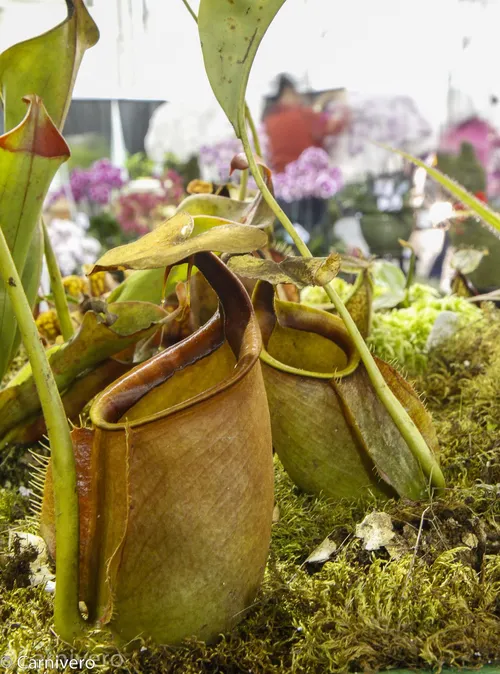 07. Nepenthes bicalcarata
07. Nepenthes bicalcarata 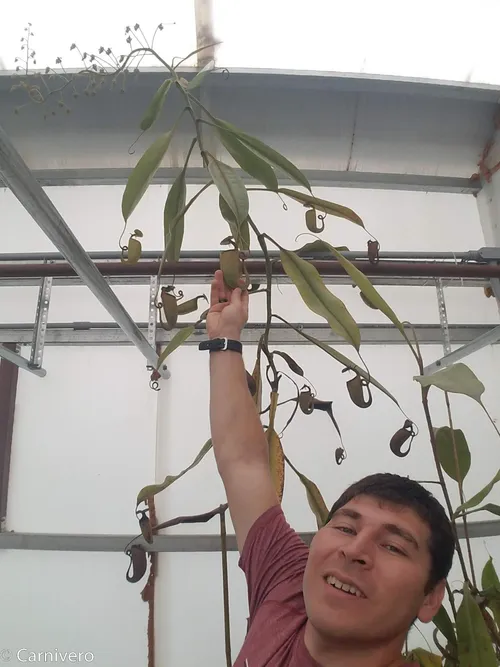 08. Nepenthes bicalcarata stem
08. Nepenthes bicalcarata stem 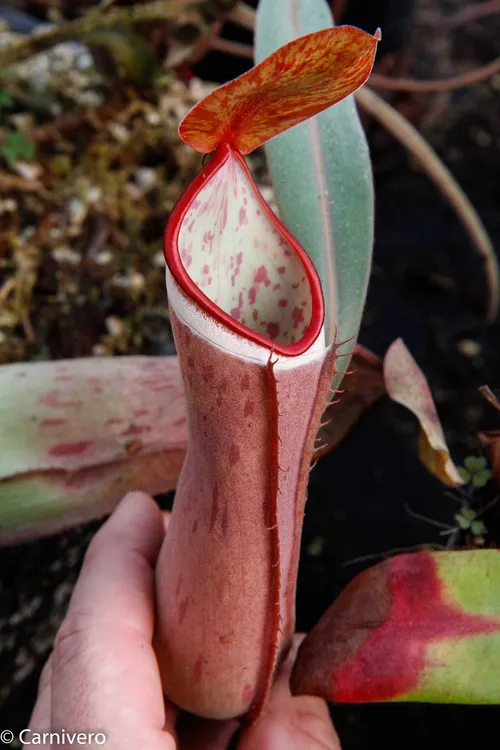 09. Nepenthes albomarginata
09. Nepenthes albomarginata 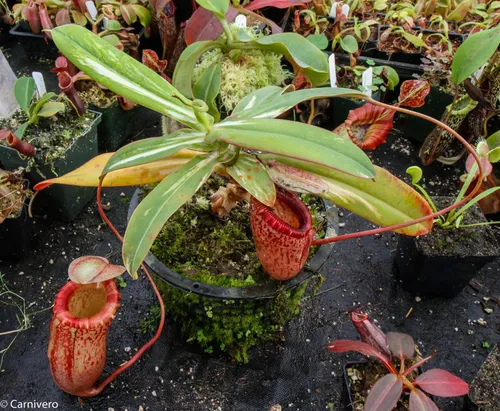 10. Nepenthes sibuyanensis, variegated specimen
10. Nepenthes sibuyanensis, variegated specimen 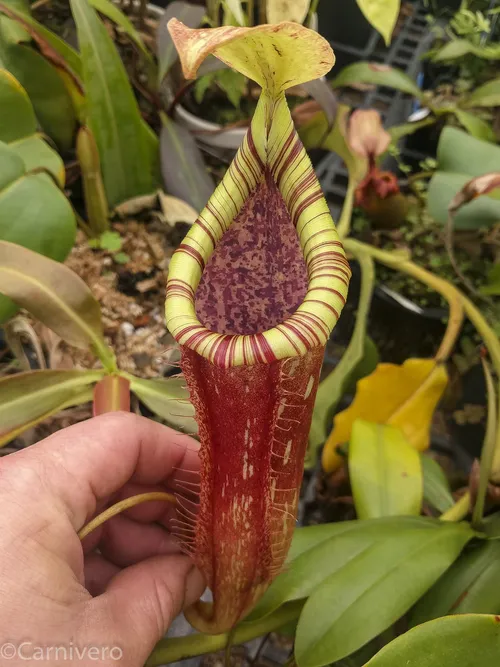 11. Nepenthes "Kohala Hapuna"
11. Nepenthes "Kohala Hapuna"  12. Nepenthes naga Dark
12. Nepenthes naga Dark 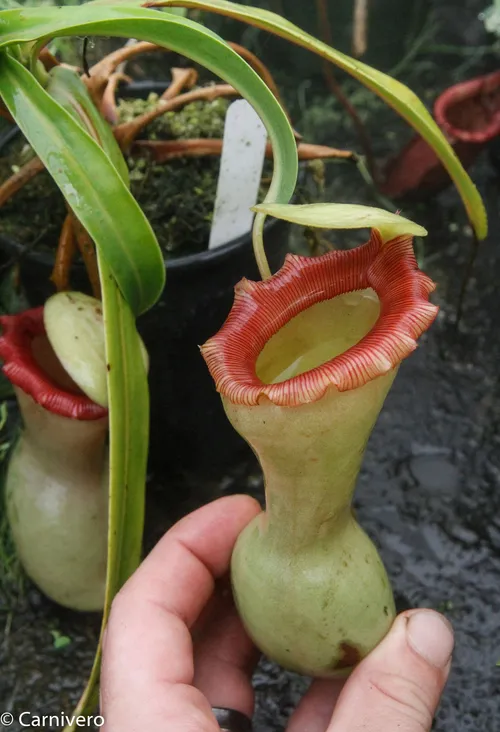 13. Nepenthes ventricosa "porcelain"
13. Nepenthes ventricosa "porcelain" 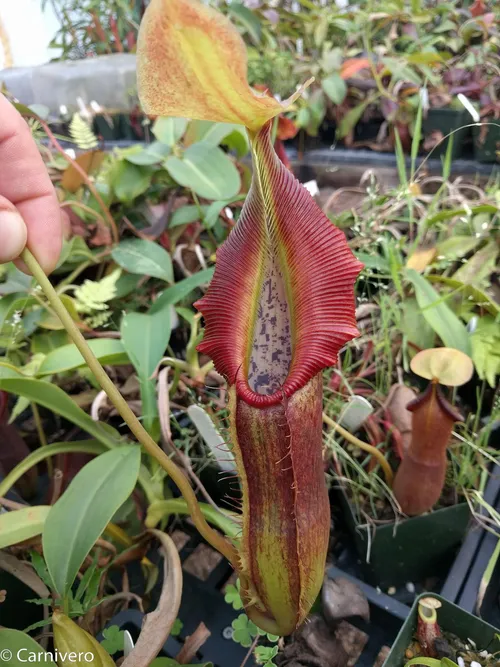 14. Nepenthes singalana, variegated form
14. Nepenthes singalana, variegated form 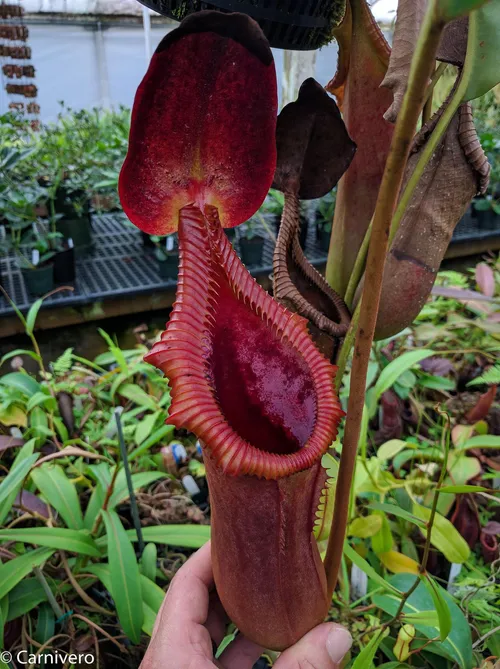 15. Nepenthes macrophylla x lowii "SG"
15. Nepenthes macrophylla x lowii "SG" 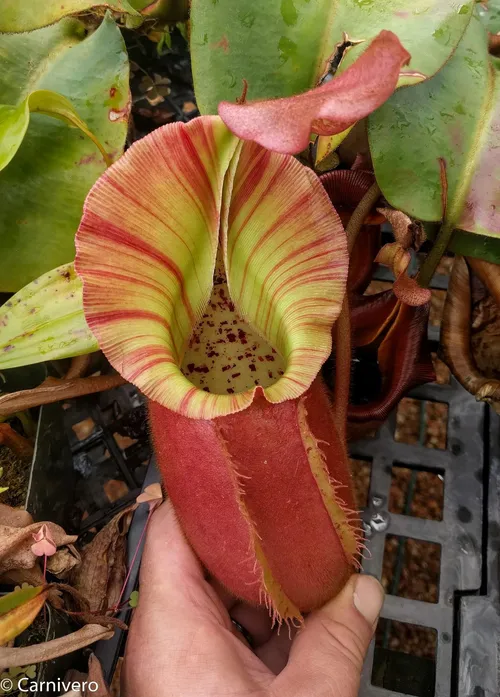 16. Nepenthes veitchii "Pink Candy Cane"
16. Nepenthes veitchii "Pink Candy Cane" 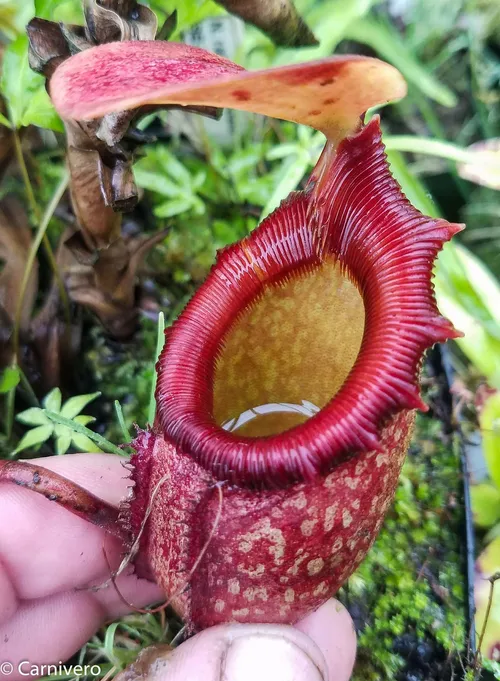 17. Nepenthes rajah "Kinabalu Ansow"
17. Nepenthes rajah "Kinabalu Ansow" 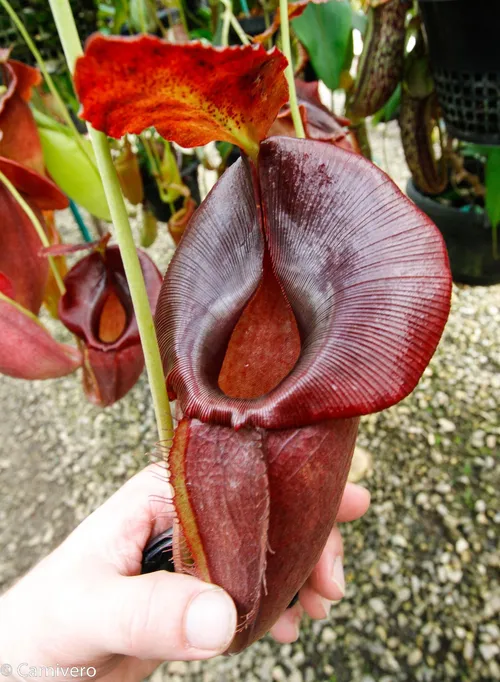 18. Nepenthes spathulata x jacquelineae, Borneo Exotics
18. Nepenthes spathulata x jacquelineae, Borneo Exotics 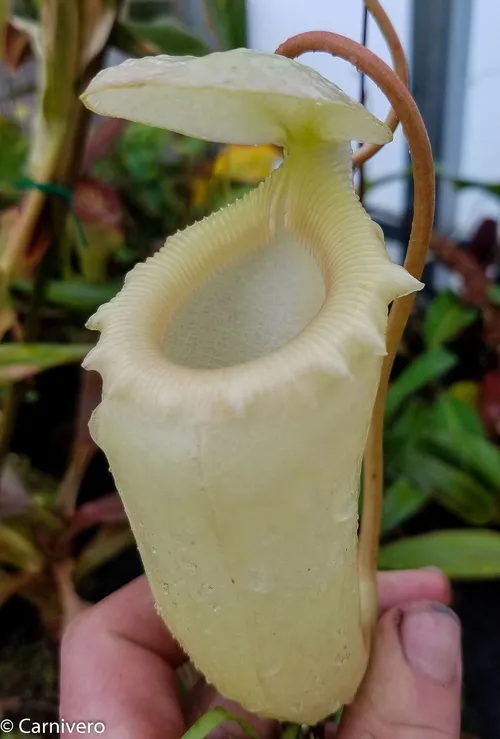 19. Nepenthes sibuyanensis, upper pitcher
19. Nepenthes sibuyanensis, upper pitcher .WrWLS5q-_Z1U9kX9.webp) 20. Nepenthes ventricosa "EP" (k)
20. Nepenthes ventricosa "EP" (k) 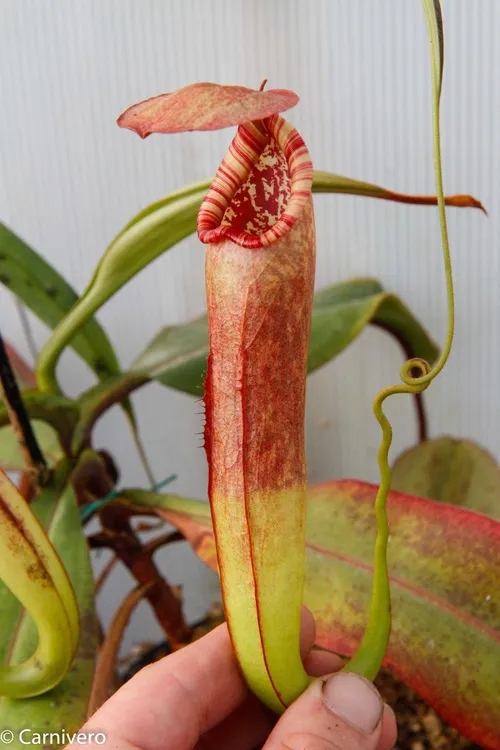 21. Nepenthes bokorensis
21. Nepenthes bokorensis .CVjE31te_ssQnc.webp) 22. Nepenthes vogelii (1 of 2)
22. Nepenthes vogelii (1 of 2) .CXbShwiw_Z1pL48J.webp) 23. Nepenthes vogelii (2 of 2)
23. Nepenthes vogelii (2 of 2) 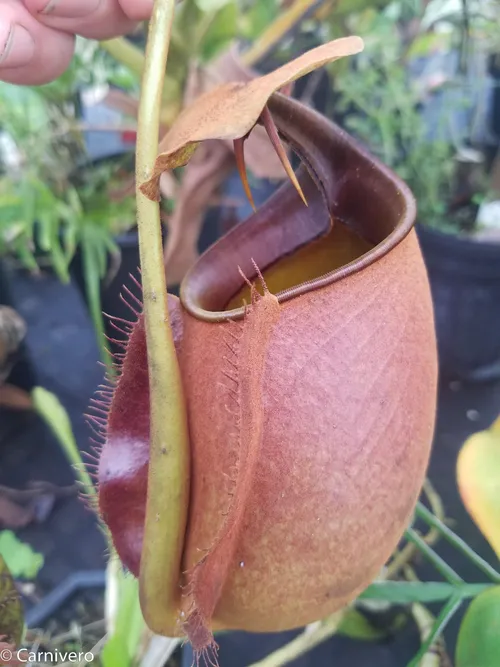 24. Nepenthes bicalcarata Giant
24. Nepenthes bicalcarata Giant 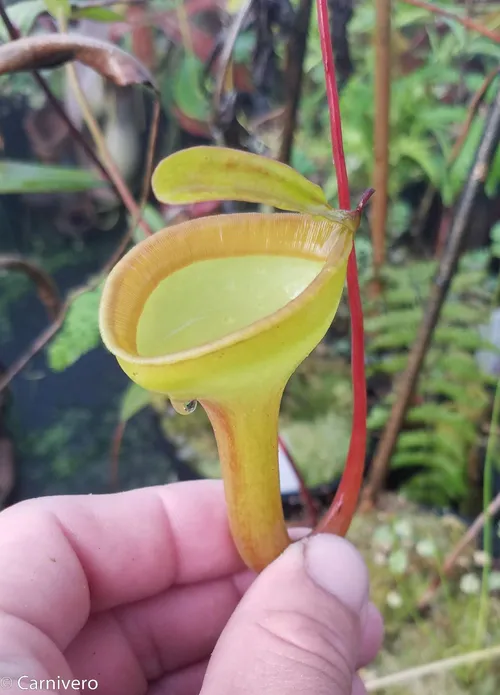 25. Nepenthes jamban, upper pitcher
25. Nepenthes jamban, upper pitcher 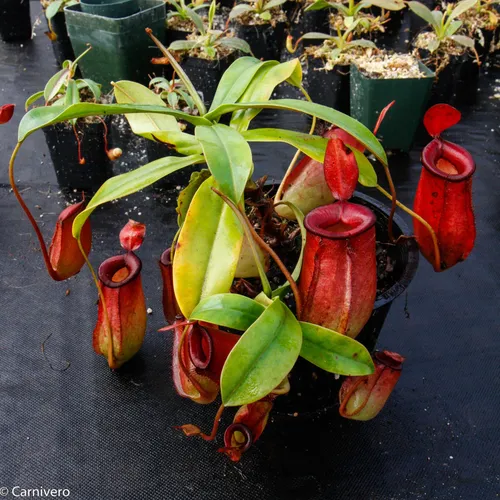 26. Nepenthes "Lady Luck" from Borneo Exotics
26. Nepenthes "Lady Luck" from Borneo Exotics 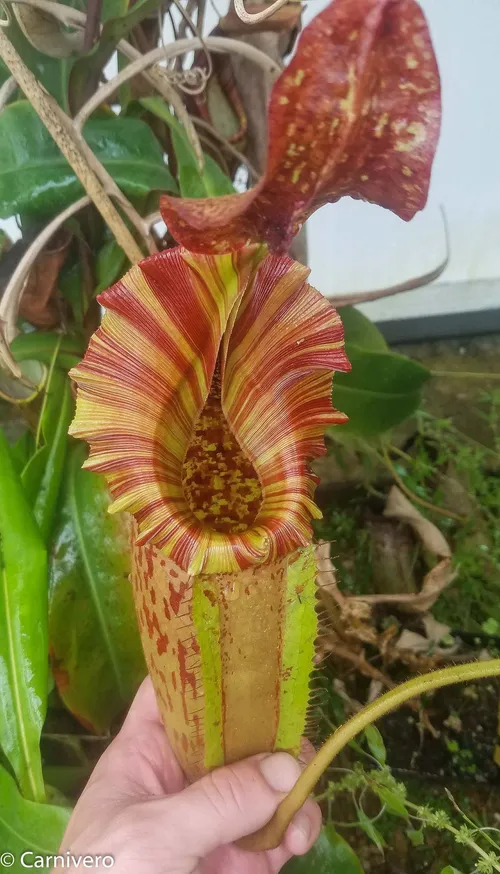 27. Nepenthes veitchii x maxima "EP"
27. Nepenthes veitchii x maxima "EP" 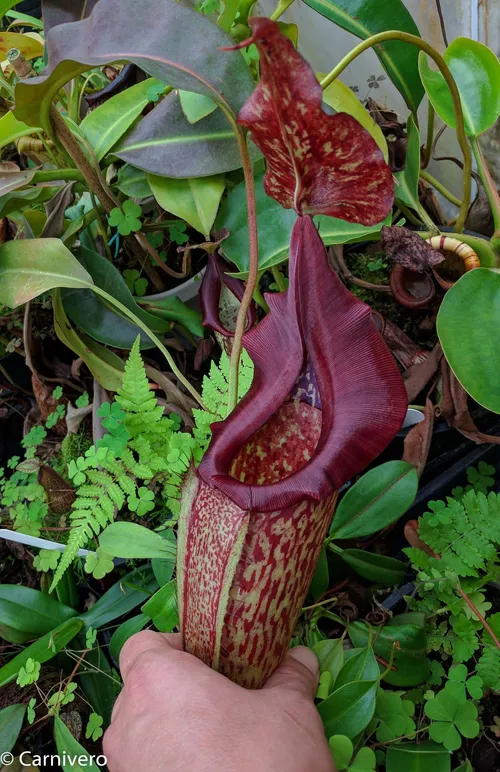 28. Nepenthes maxima, BE 3067
28. Nepenthes maxima, BE 3067 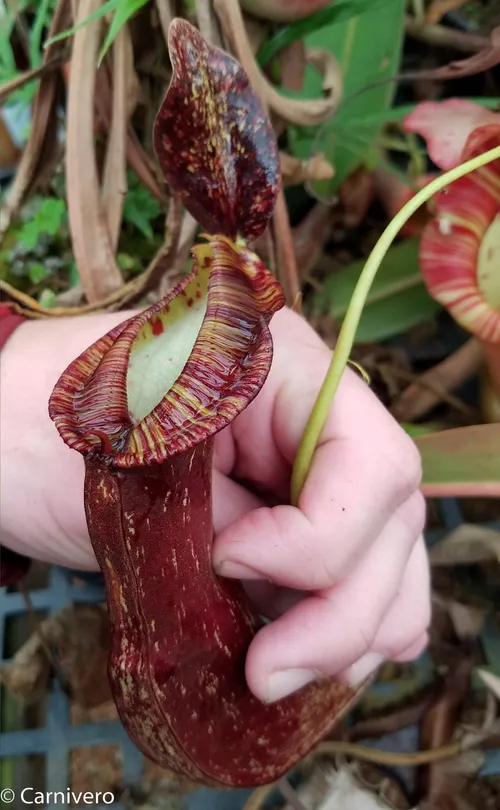 29. Nepenthes mirabilis var echinostoma
29. Nepenthes mirabilis var echinostoma 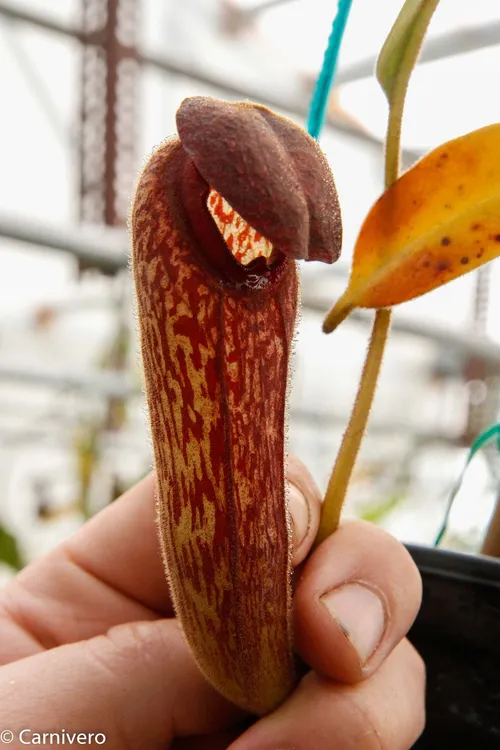 30. Nepenthes klossii, BE original
30. Nepenthes klossii, BE original 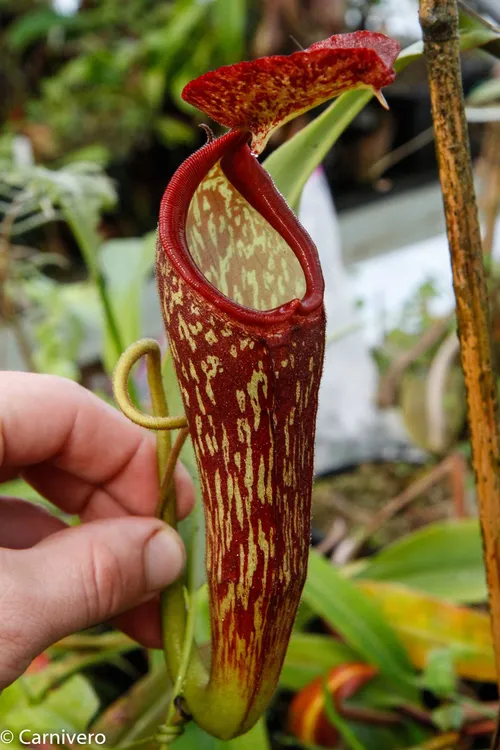 31. Nepenthes klossii x maxima
31. Nepenthes klossii x maxima 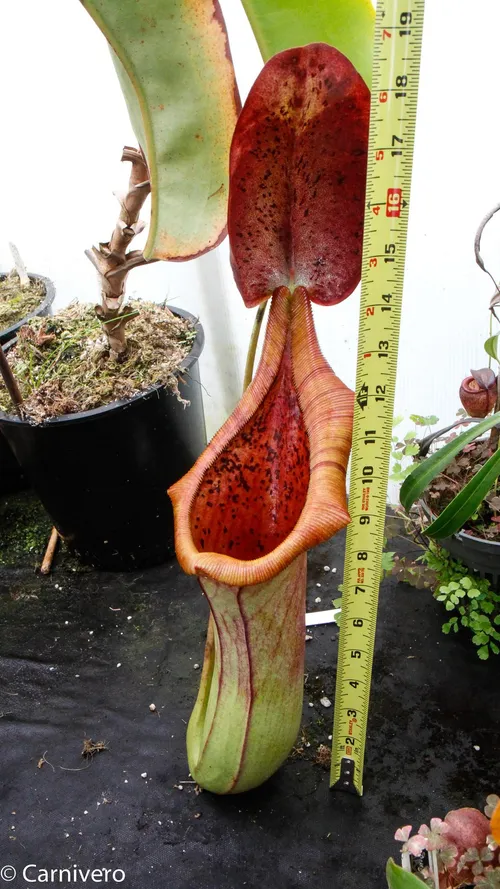 32. Nepenthes truncata x ephippiata, giant form
32. Nepenthes truncata x ephippiata, giant form How did you prepare for the more extreme Texan weather?
The challenge was to design energy efficient lowland, intermediate, and highland greenhouses for the Austin climate. I looked throughout the horticultural industry but suitable software was simply not available, so I set out to build simulation software to model greenhouse conditions for any environment. I coded up thousands of lines in Matlab, taking into account every environmental parameter recorded by the National Weather Service. I came up with systems for each environmental zone, incorporating a lot of what I’d learned visiting other nurseries around the globe.
Each area incorporated highly insulated polyethylene covering, a high pressure misting system and oversized evaporative coolers which keep the entire greenhouse close to the theoretical wet-bulb temperature. The highland greenhouse operates in an intelligent hybrid mode where the system can calculate the wet bulb temperature dynamically and if needed uses 2 air conditioners (mainly for night time cooling) to achieve the targeted temperatures. The ACs are hacked to allow them to operate at a lower setpoint than the traditional 60°F (16°C) setting and this provides night temps in the low to mid 50’s (10-12°C) throughout the year. The entire greenhouse is designed to be backed up by a propane-powered standby generator with automatic transfer switch which prevents another Phoenix-esque greenhouse catastrophe in the case of power outages. In addition, the design includes WiFi alarm monitoring and remote control of the entire greenhouse.
Once you had your grand plan, how did you actually get started? Where did you obtain all the necessary materials for construction?
Without taking on any form of financing, I was on a tight budget. So just like the Google motto often preached by its founder, Sergey Brin, I stayed scrappy!
I was able to locate a 3000 sq ft. greenhouse being demolished in Indiana and negotiated paying only pennies on the dollar from its real value. This greenhouse was perfect because it was engineered to endure winds consistent with an F1 tornado, so I had reassurance that it wouldn’t be damaged by Texas storms. I procured another 3000 sq ft. greenhouse from a nursery in Madison, Wisconsin which was shutting down. This one even came with benches and was rated for a Wisconsin snow load. Transporting the greenhouses from Indiana and Wisconsin to Texas was quite an endeavour as well, but let’s just suffice it to say that my truck is great for hauling and you don’t want to mess with Iowa deer.
Unfortunately, it was nearly impossible to find a reasonably-priced contractor for the assembly job with Austin building up so quickly. I estimated that it would take roughly a year to construct the greenhouse on my own and I didn’t quite have the savings to complete the project, so my wife and I decided I should continue working at Google for a year to save up. In the meantime, I had my plants boarded at Golden Gate Orchids in San Francisco. I would fly into the Bay Area every Monday and back to Austin for the weekend. It was a difficult year for sure. With the cost of rent so high, I ended up couch-surfing with friends and even spent a few nights in the nap pods at Google. Outside of work hours, I would spend most of my time with the collection.
Constructing a greenhouse of that size was certainly the largest project I had ever taken on myself. The learning curve was very steep. A special thanks should be extended to my dad who burned all his vacation time that year to help me construct the greenhouse in the burning Texas sun! Thanks also to Jesse Huro who traveled from California to figure out how to get the gigantic trusses in place, and to my nephews Gabriel and Julian who helped spider-man install the polyethylene roofing and quickly learned to pour a concrete sidewalk. I also need to give a shout out to my Carnivero crew Tyson, Forrest, Morgan and Pat. Also thank you to Rodrigo, Pat, Deb, Jeff, Karina, Frank, Becca, Tony, Liam and Mia who came out to help at different phases. And a special thanks to my cousin Sam and the Aguilera family for allowing me to stay with them in the Bay Area as well as Juan and Fernando for allowing me to couch surf and re-live a bit of our bachelor pad days together.
Click on any photo to zoom in. Use arrow keys or swipe to navigate.
.CmpRgCb5_180iXU.webp) 01. Nepenthes lowii x ventricosa "EP" - giant (1 of 2)
01. Nepenthes lowii x ventricosa "EP" - giant (1 of 2) .B1g-M3-T_1V8PkQ.webp) 02. Nepenthes lowii x ventricosa "EP" - giant (2 of 2)
02. Nepenthes lowii x ventricosa "EP" - giant (2 of 2) 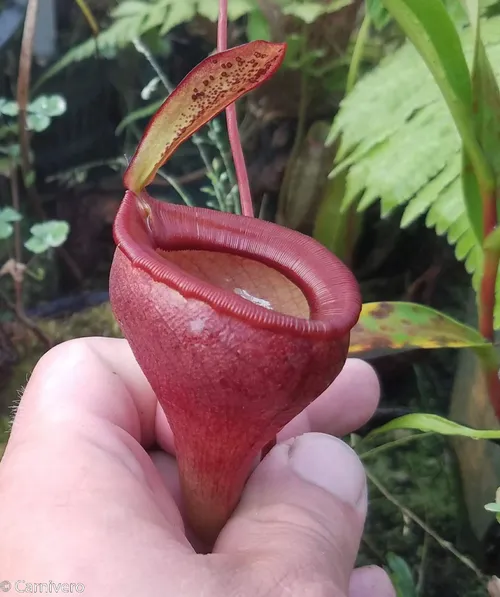 03. Nepenthes jamban
03. Nepenthes jamban %20x%20burbidgeae.CqA25xsc_1Ndt94.webp) 04. Nepenthes (eymae x veitchii) x burbidgeae
04. Nepenthes (eymae x veitchii) x burbidgeae .DnszYtwX_OJPxl.webp) 05. Nepenthes truncata (C)
05. Nepenthes truncata (C) %20male._pU_iMnH_Z1T3JL8.webp) 06. Nepenthes truncata (D) male
06. Nepenthes truncata (D) male 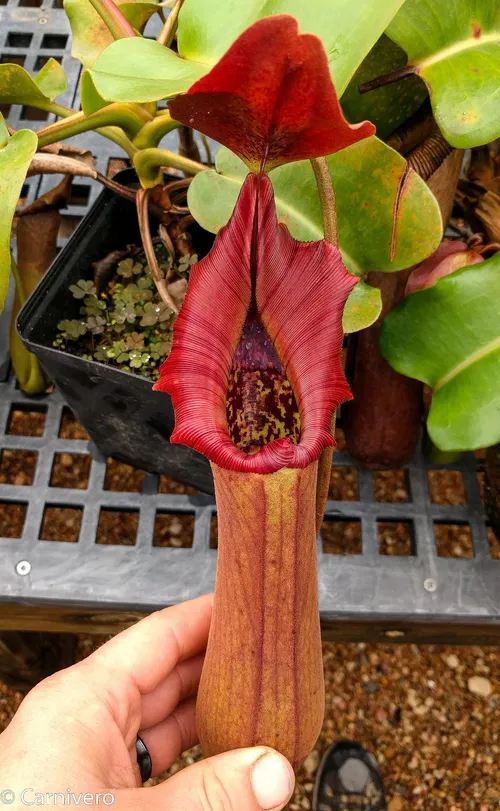 07. Nepenthes truncata, Paisan 1
07. Nepenthes truncata, Paisan 1 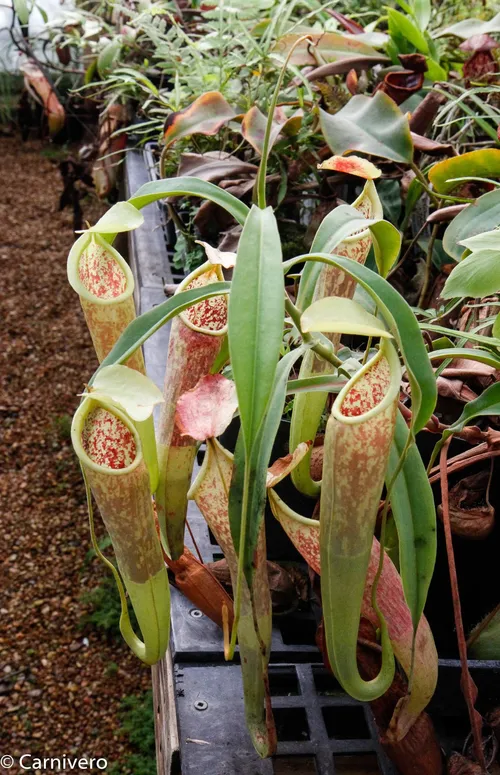 08. Nepenthes smilesii, BE
08. Nepenthes smilesii, BE 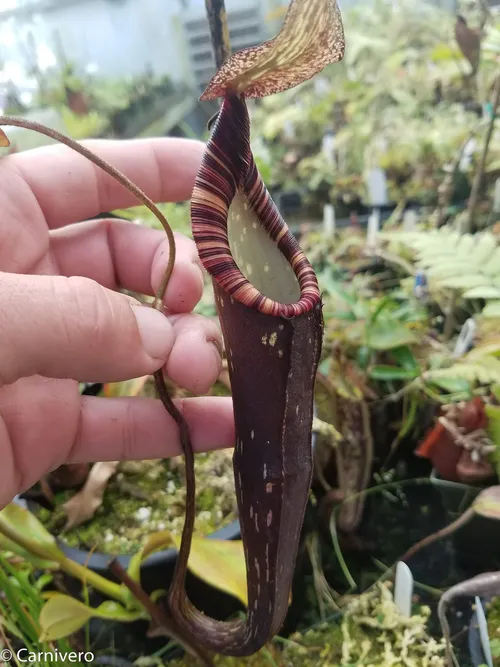 09. Nepenthes spectabilis, "Ugly Duckling"-esque
09. Nepenthes spectabilis, "Ugly Duckling"-esque 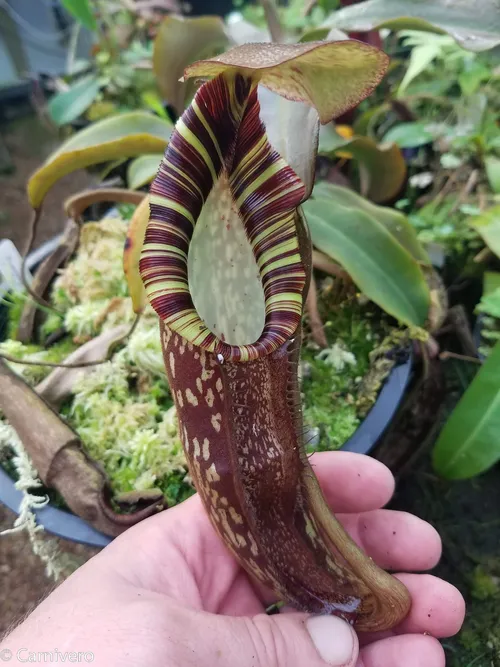 10. Nepenthes spectabilis, North Sumatra 1
10. Nepenthes spectabilis, North Sumatra 1 ![11. Nepenthes (ventricosa x sibuyanensis) x {[ventricosa x (spathulata x lowii)] x trusmadiensis}](/_astro/11.%20Nepenthes%20(ventricosa%20x%20sibuyanensis)%20x%20__ventricosa%20x%20(spathulata%20x%20lowii)_%20x%20trusmadiensis_.Cxo6I2ZU_ZH483.webp) 11. Nepenthes (ventricosa x sibuyanensis) x {[ventricosa x (spathulata x lowii)] x trusmadiensis}
11. Nepenthes (ventricosa x sibuyanensis) x {[ventricosa x (spathulata x lowii)] x trusmadiensis} 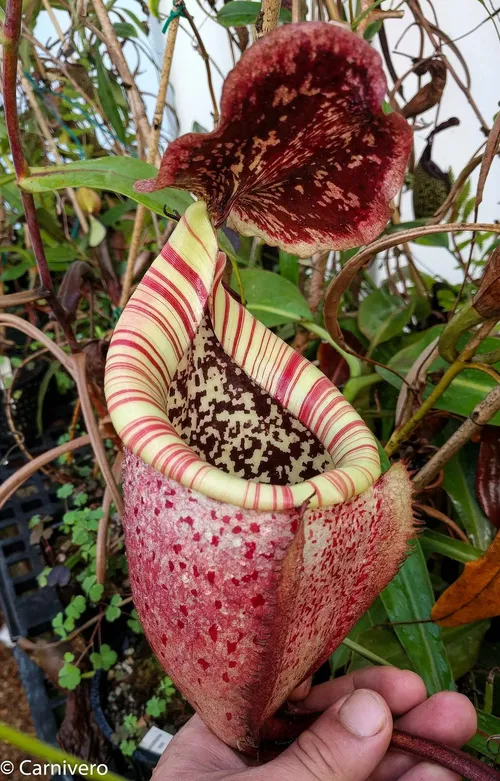 12. Nepenthes burbidgeae Pig Hill
12. Nepenthes burbidgeae Pig Hill _%20lower%20pitcher.ltK2bXtQ_2qQHdh.webp) 13. Nepenthes hamata (BE 3715), lower pitcher
13. Nepenthes hamata (BE 3715), lower pitcher _%20upper%20pitchers.B19F74-k_15uByb.webp) 14. Nepenthes hamata (Lumut), upper pitchers
14. Nepenthes hamata (Lumut), upper pitchers .yVfFem97_Z2jmlC4.webp) 15. Nepenthes burkei x hamata (BE 3594)
15. Nepenthes burkei x hamata (BE 3594) 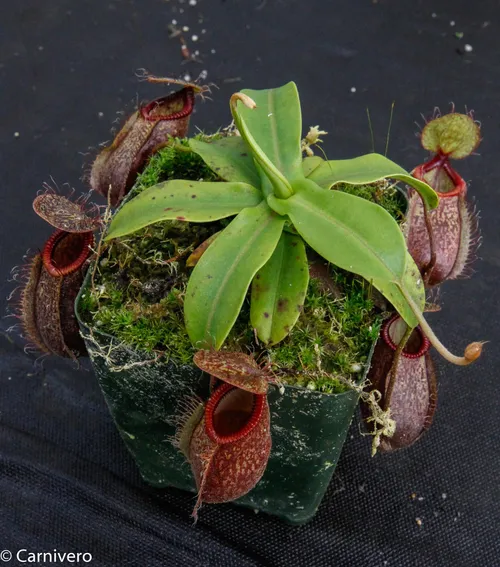 16. Nepenthes undulatifolia x hamata
16. Nepenthes undulatifolia x hamata .DkniywqR_1XRDXo.webp) 17. Nepenthes sibuyanensis x hamata, BESG (1 of 2)
17. Nepenthes sibuyanensis x hamata, BESG (1 of 2) .Dw11vb33_1Wr9af.webp) 18. Nepenthes sibuyanensis x hamata, BESG (2 of 2)
18. Nepenthes sibuyanensis x hamata, BESG (2 of 2) 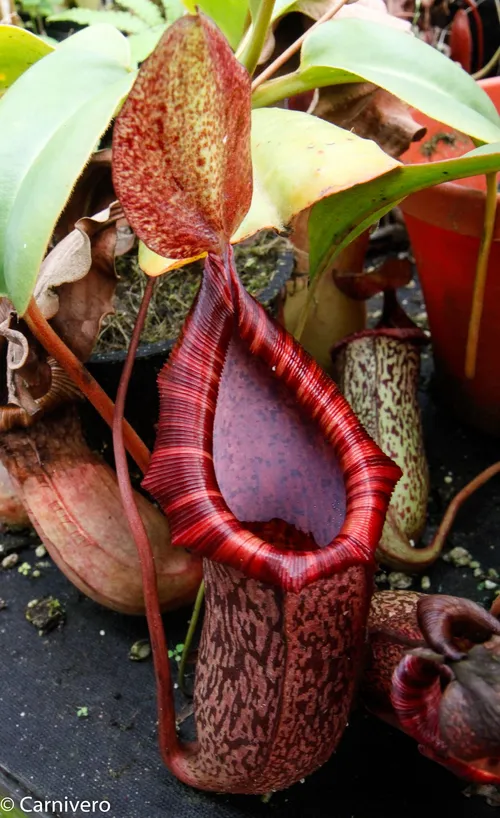 19. Nepenthes ventricosa x spectabilis OG
19. Nepenthes ventricosa x spectabilis OG 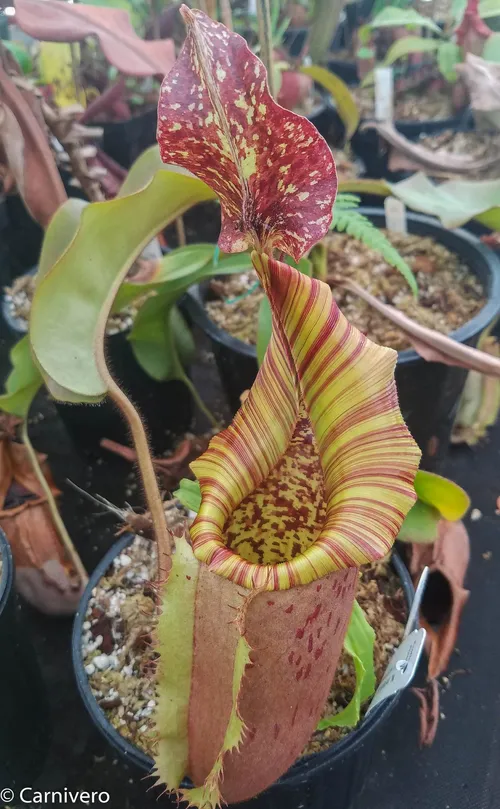 20. Nepenthes veitchii x eymae
20. Nepenthes veitchii x eymae 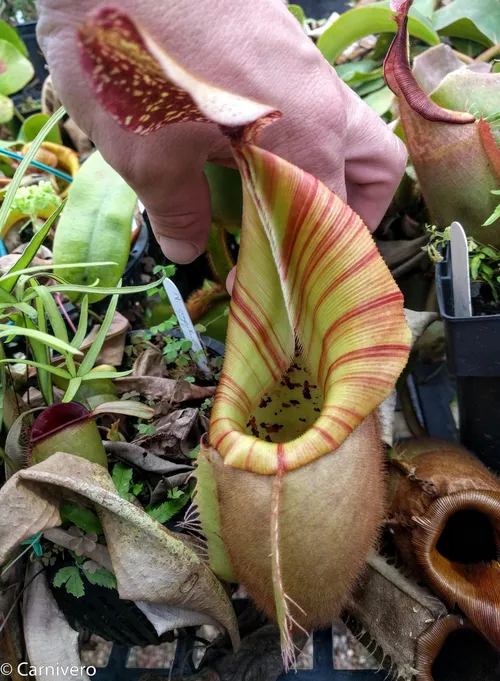 21. Nepenthes veitchii "Big Mama"
21. Nepenthes veitchii "Big Mama" %20x%20(talangensis%20x%20hamata).B58TStS2_Z1JVxEj.webp) 22. Nepenthes (talangensis x sibuyanensis) x (talangensis x hamata)
22. Nepenthes (talangensis x sibuyanensis) x (talangensis x hamata) .CSBSAYyL_Z1MFsC3.webp) 23. Nepenthes veitchii x platychila (BE 3213)
23. Nepenthes veitchii x platychila (BE 3213) 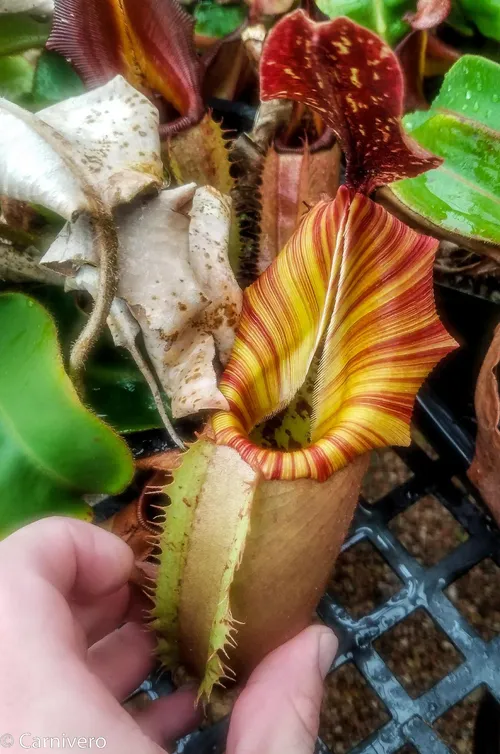 24. Nepenthes veitchii "Drew McClain", female
24. Nepenthes veitchii "Drew McClain", female 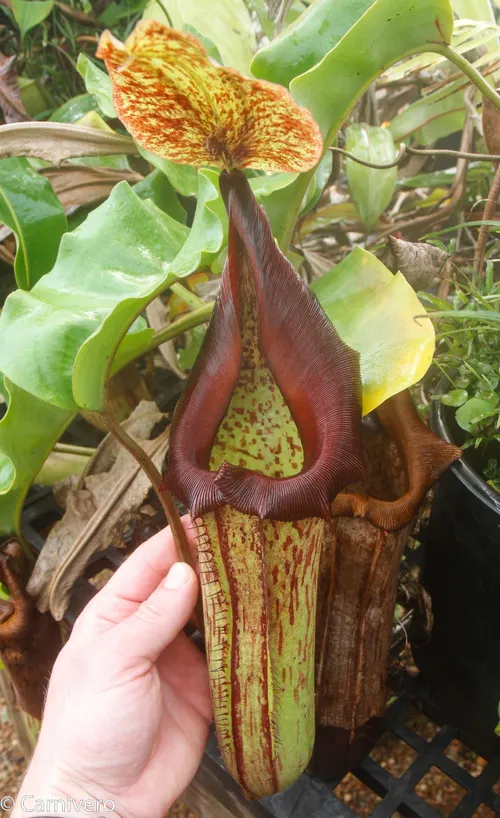 25. Nepenthes truncata x maxima
25. Nepenthes truncata x maxima 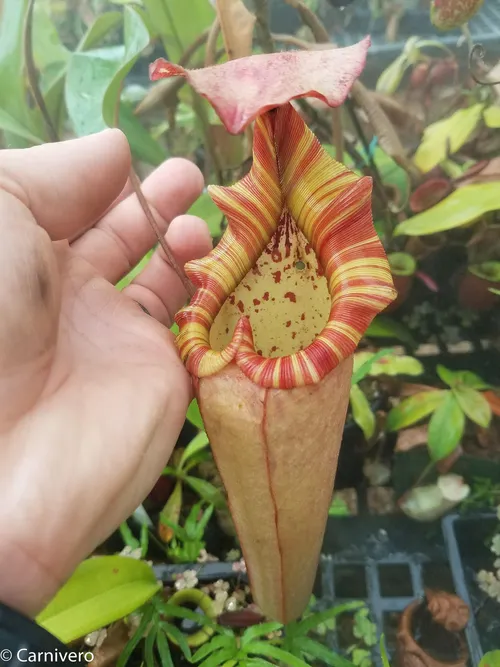 26. Nepenthes "Song of Melancholy"
26. Nepenthes "Song of Melancholy" .CLIycqgT_Z150OTb.webp) 27. Nepenthes robcantleyi (1 of 5)
27. Nepenthes robcantleyi (1 of 5) .DAW_67Pt_ZjoygG.webp) 28. Nepenthes robcantleyi (2 of 5)
28. Nepenthes robcantleyi (2 of 5) .BH6lnKTC_Z1kuUAU.webp) 29. Nepenthes robcantleyi (3 of 5)
29. Nepenthes robcantleyi (3 of 5) .BDcqg6kN_Y4Aa1.webp) 30. Nepenthes robcantleyi (4 of 5)
30. Nepenthes robcantleyi (4 of 5) .CDB5TtOq_hcXPw.webp) 31. Nepenthes robcantleyi (5 of 5)
31. Nepenthes robcantleyi (5 of 5) 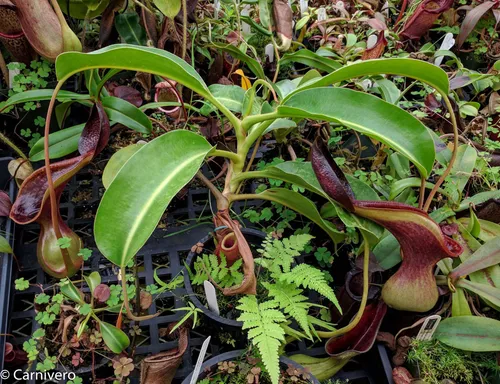 32. Nepenthes lowii, Trusmadi
32. Nepenthes lowii, Trusmadi 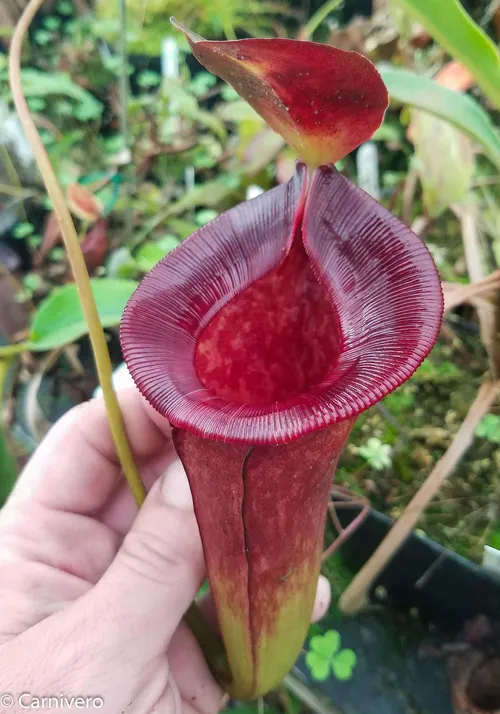 33. Nepenthes lowii x jacquelineae
33. Nepenthes lowii x jacquelineae 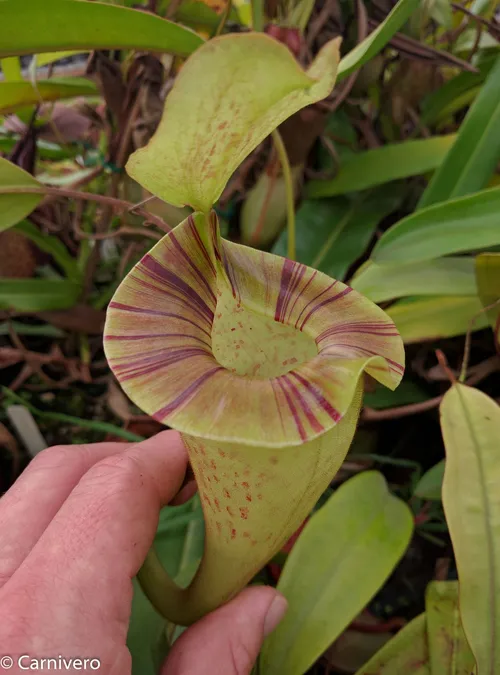 34. Nepenthes platychila
34. Nepenthes platychila 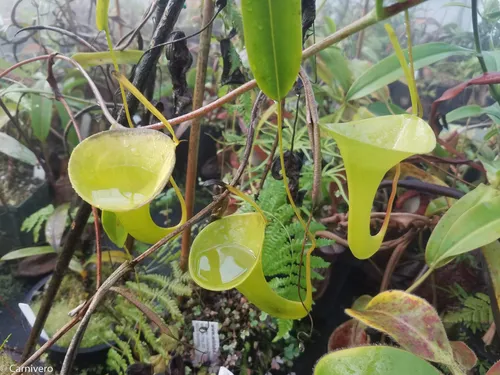 35. Nepenthes inermis
35. Nepenthes inermis %20x%20boschiana%20-%20red%20ruffled.Lp-Z0Cco_Z1V0R97.webp) 36. Nepenthes (lowii x veitchii) x boschiana - red ruffled
36. Nepenthes (lowii x veitchii) x boschiana - red ruffled 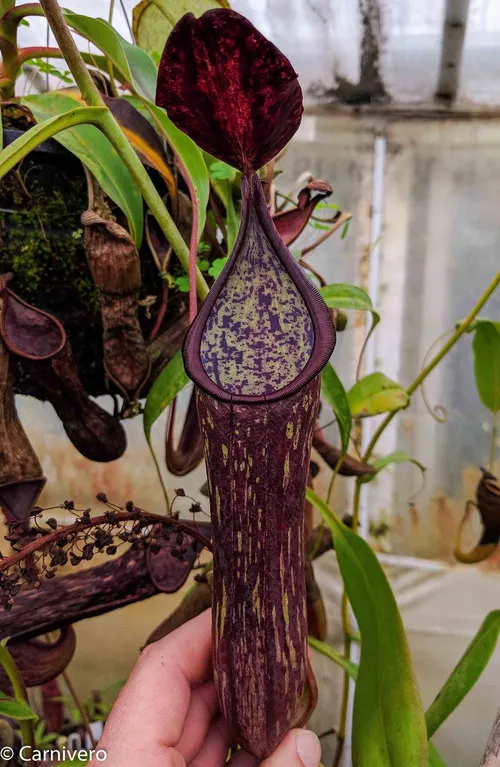 37. Nepenthes copelandii
37. Nepenthes copelandii %20x%20northiana.OrywnJ3P_2qFfTd.webp) 38. Nepenthes (orbiculata x ampullaria) x northiana
38. Nepenthes (orbiculata x ampullaria) x northiana .D-5UfnrX_ZBJMU8.webp) 39. Nepenthes burbidgeae x campanulata (BE 3564)
39. Nepenthes burbidgeae x campanulata (BE 3564) 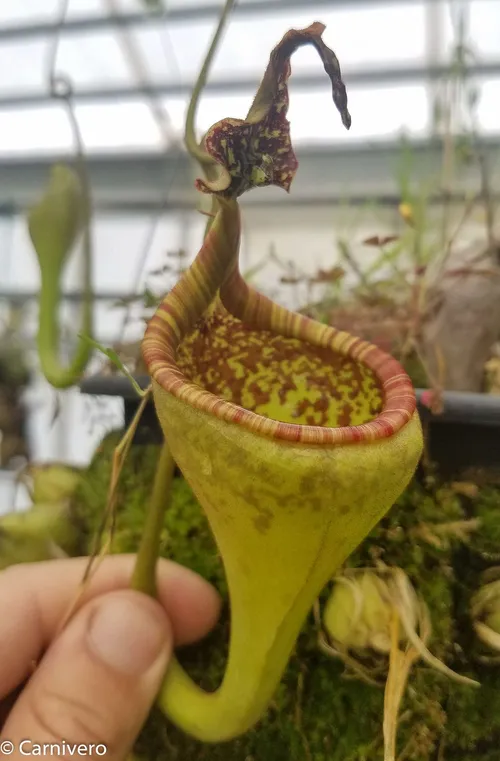 40. Nepenthes eymae "EP" male
40. Nepenthes eymae "EP" male %20x%20campanulata.yEhVx_8t_ZkDL9G.webp) 41. Nepenthes (lowii x veitchii) x campanulata
41. Nepenthes (lowii x veitchii) x campanulata  42. Nepenthes burkei
42. Nepenthes burkei When did the big move finally happen?
In July of 2016 I finally pulled the trigger and left Google. The time had come to be reunited with all the plants. Transporting 2000 sq ft. of plants across the Sonoran desert and halfway across the country was obviously a daunting prospect, so I decided to have a trailer custom built. It was insulated and had a heat pump/AC with a gas generator to regulate temperatures on the journey.
I’d already done a test run with some of the temperate plants the previous year, which had gone well enough to give me the confidence to transport the tropicals. So in December 2016, I moved the highlanders to Texas. All the plants were put onto racks, wrapped with saran wrap (cling film), and secured in the trailer with ratcheting straps. I made the journey solo, and luckily the weather held up and everything went smoothly.
The lowlander trip, however, was more epic. Thankfully by then Tyson Urich had started helping me at the nursery, and he made the journey with me in January 2017. We decided to take the northern route and ended up staying with Jeremiah Harris in Colorado Springs and even got to visit Jeff Shafer’s famous collection near Denver. We hit a winter blizzard and had to re-route from Wyoming to below the Sierra Range in Las Vegas. We spun out on black ice in Wyoming but thankfully ended up on a wide shoulder with only minimal damage to the truck and trailer. The rest of the trip finished out fairly smoothly. I did love seeing people’s reactions at truck stops when I would open the back of the trailer to reveal a tropical paradise!
In June 2018 we finally launched our new website, and have been extremely pleased with the support from our customers. Just know, what you’ve seen is only a taste of what is to come!
3. Carnivero’s Breeding Program
You mentioned that breeding for the best genetics and for a wider clientele was part of your goal for Carnivero. Has that process started since the move?
Yes! Since moving to Texas, the plants have settled in nicely and we’ve created hundreds of Nepenthes crosses, many of them world firsts as well as re-creations of some amazing classics such as N. hamata x edwardsiana and N. truncata x lowii. We’ve also been fortunate to have been able to line breed 16 Nepenthes species this year alone, and have >250,000 Sarracenia seeds from very select crosses ready to be sown once the temperate greenhouse is complete. We also have a tissue culture laboratory on-site, in order to provide a workspace and housing for the many breeding projects we have going.
What are some of your favourite breeding plants right now?
I’ve got quite a few favourites; it all depends on the day really. I’m always a sucker for nice N. veitchii and I’ve got some really nice ones I’ve used for breeding. There’s my female “Psychedelic” affectionately named for my psychic friend Drew McClain who I received the plant from. I’ve also got my own named “Pink Candy Cane” which is a prolific breeding male with incredible color.
Click on any photo to zoom in. Use arrow keys or swipe to navigate.
![01. Nepenthes "Redonkulous", which is N. (Rokko Exotica x boschiana) x ({Rokko x [fusca X spectabilis]} X trusmadiensis)](/_astro/01.%20Nepenthes%20_Redonkulous__%20which%20is%20N.%20(Rokko%20Exotica%20x%20boschiana)%20x%20(_Rokko%20x%20_fusca%20X%20spectabilis__%20X%20trusmadiensis).C3i0taLJ_ZTIlt8.webp) 01. Nepenthes "Redonkulous", which is N. (Rokko Exotica x boschiana) x ({Rokko x [fusca X spectabilis]} X trusmadiensis)
01. Nepenthes "Redonkulous", which is N. (Rokko Exotica x boschiana) x ({Rokko x [fusca X spectabilis]} X trusmadiensis) 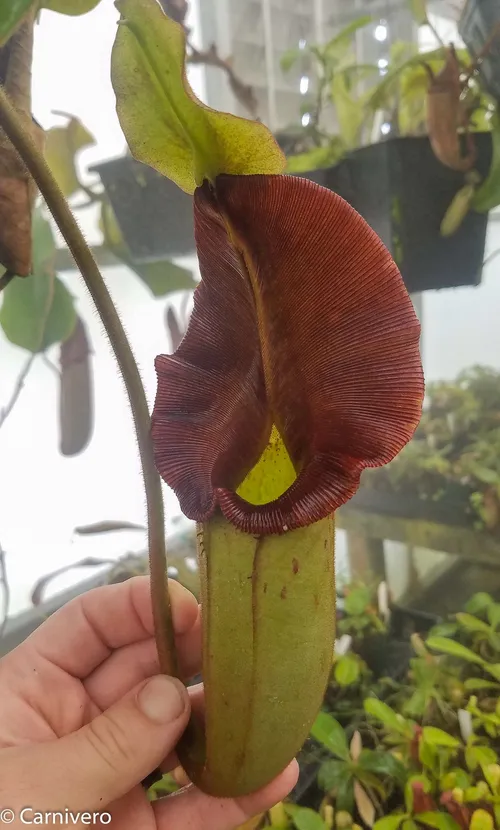 02. Nepenthes "Whisper", from Leilani Hapua Nepenthes Nursery
02. Nepenthes "Whisper", from Leilani Hapua Nepenthes Nursery %20x%20veitchii.1io6U-jV_1Gdevb.webp) 03. Nepenthes (Rokko x boschiana) x veitchii
03. Nepenthes (Rokko x boschiana) x veitchii 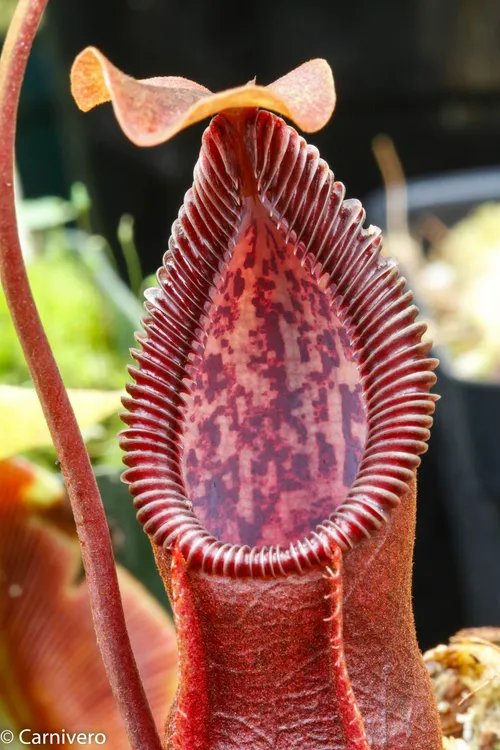 04. The cultivar of Nepenthes singalana x hamata called "Metallic Shine"
04. The cultivar of Nepenthes singalana x hamata called "Metallic Shine" As far as other plants for breeding, I’ve got some amazing complex hybrids with eye catching wide peristomes (perhaps some of the widest peristomes ever recorded on a Nepenthes). This includes crosses from Leilani Hapu’u Nepenthes Nursery such as “Whisper” and an Exotica Plants hybrid I’ve nicknamed “Redonkulous” - the cross is N. (Rokko Exotica x boschiana) x ({Rokko x [fusca X spectabilis]} X trusmadiensis).
I’ve also got some really interesting plants in terms of color and visual appearance I’m using for breeding, such as a very select clone of N. (Rokko x boschiana) x veitchii. I’ll soon be registering a cultivar of N. singalana x hamata called ‘Metallic Shine’ that has an amazing visual effect.
I believe there are color variations possible with Nepenthes that we have only scratched the surface of. We have seen a lot of hybrids with flared and striped peristomes but there’s a lot of room for color hues and fading which I hope to explore. Also, there’s still room for breeding in fast growth and tolerance to dryness and I believe some breeding with Indo-chinese species could assist in these efforts. On the flip side, Nepenthes ampullaria seems to pass on its ability to thrive in flooded conditions (the #1 killer of the tabletop orchid) to its hybrids.
How are you deciding what to prioritize in terms of breeding? Is it difficult to anticipate demand?
I’m running a survey and seed giveaway right now so I can get a better understanding of what people are looking for in crosses, and what they value in building their collections!
Thanks for reading! Make sure to visit the Carnivero website and follow Drew on Instagram. If you’ve enjoyed this post, you can subscribe to my email newsletter to be notified when I publish my next article. If you run a carnivorous plant nursery, society, or are involved in conservation efforts to protect these magnificent plants and would like to share your story on Tom’s Carnivores, please get in touch via email.
